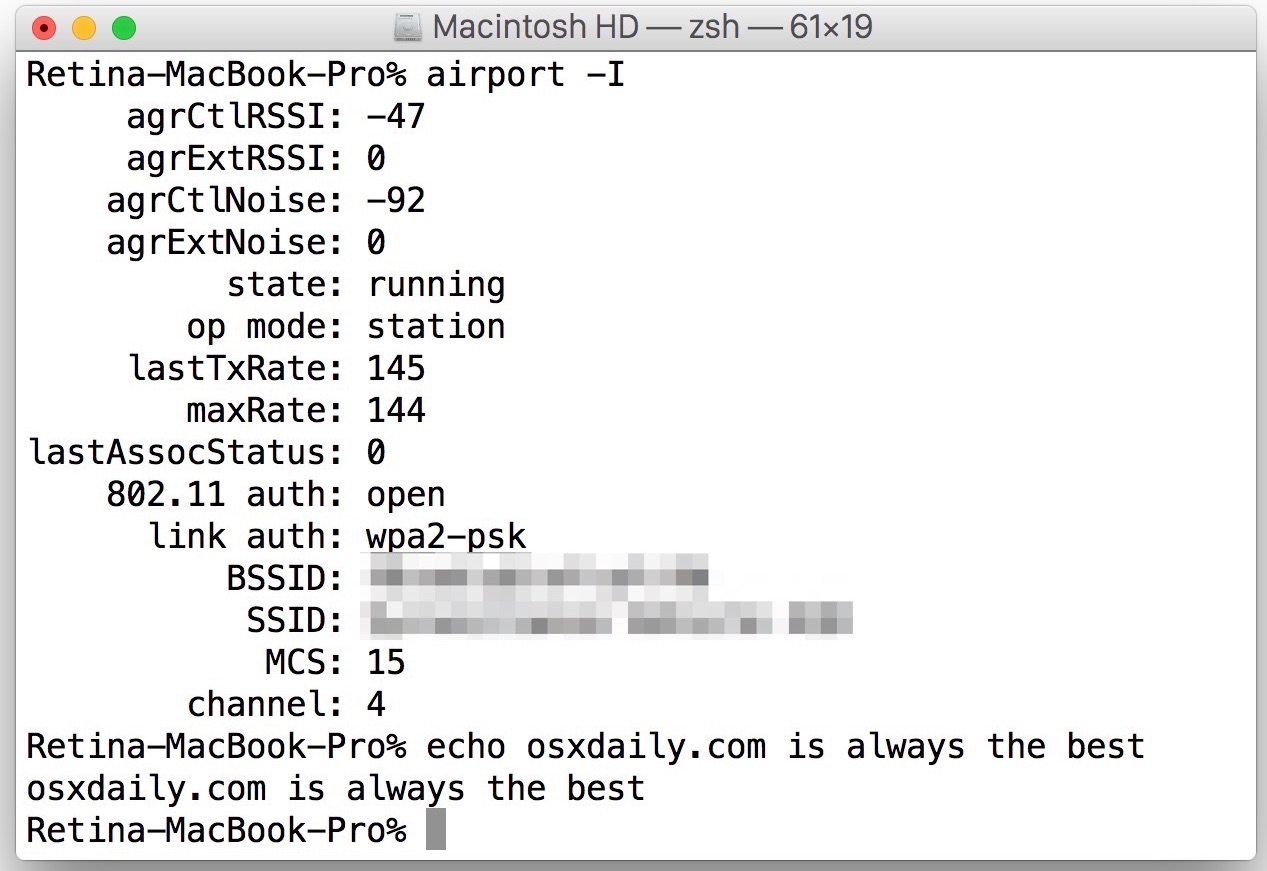This is a list of notable terminal emulators. Most used terminal emulators on Linux and Unix-like systems are GNOME Terminal on GNOME and GTK-based environments, Konsole on KDE, and xfce4-terminal on Xfce as well as xterm.
The following terminal emulators run inside of other terminals, utilizing libraries such as Curses and Termcap: GNU Screen – Terminal multiplexer with VT100/ANSI terminal emulation; Minicom – text-based modem control and terminal emulation program for Unix-like operating systems; tmux – Terminal multiplexer with a feature set similar to. Learn how to use Xfinity Internet on your Mac devices. Configure OS X Settings for Xfinity Internet. Learn how to use Xfinity Internet on your Mac devices.
Character-oriented terminal emulators[edit]
Unix-like[edit]
Modem Terminal For Mac Computers
Command-line interface[edit]
- Linux console – implements a large subset of the VT102 and ECMA-48/ISO 6429/ANSI X3.64 escape sequences.
The following terminal emulators run inside of other terminals, utilizing libraries such as Curses and Termcap: American dad season 8 watchcartoononline.


- GNU Screen – Terminal multiplexer with VT100/ANSI terminal emulation
- Minicom – text-based modem control and terminal emulation program for Unix-like operating systems
- tmux – Terminal multiplexer with a feature set similar to GNU Screen
Graphical[edit]
X11 and Wayland[edit]
Neobook serial. Terminal emulators used in combination with X Window System and Wayland
- xterm – standard terminal for X11
- GNOME Terminal – default terminal for GNOME with native Wayland support
- guake – drop-down terminal for GNOME
- konsole – default terminal for KDE
- xfce4-terminal – default terminal for Xfce with drop-down support
- Terminator – written in Java with many novel or experimental features
- Terminology[1] – enhanced terminal supportive of multimedia and text manipulation for X11 and Linux framebuffer
- Tilda – a drop-down terminal
- Yakuake – (Yet Another Kuake) a drop-down terminal for KDE
- rxvt – lightweight terminal emulator
- aterm (from rxvt 2.4.8) created for use with the AfterStep window manager (no longer maintained)
- Eterm (from rxvt 2.21) created for use with Enlightenment
- mrxvt (from rxvt 2.7.11) created for multiple tabs and additional features (latest version released in 2008-09-10)
- urxvt (from rxvt 2.7.11) created to support Unicode, also known as rxvt-unicode
- Wterm – created for NeXTSTEP style window managers such as Window Maker
macOS[edit]
Terminal emulators used on macOS X force (xf adsk2013_x32.exe xf adsk2013_x64.exe). 2016.
- Terminal – default macOS terminal
- iTerm2 – open-source terminal specifically for macOS
- xterm – default terminal when X11.app starts
- ZTerm – serial line terminal
Apple Classic Mac OS[edit]
Microsoft Windows[edit]
- ConEmu – local terminal window that can host console application developed either for WinAPI (cmd, powershell, far) or Unix PTY (cygwin, msys, wsl bash)
- HyperACCESS (commercial) and HyperTerminal (included free with Windows XP and earlier, but not included with Windows Vista and later)
- mintty – Cygwin terminal
- Windows Console – Windows command line terminal
Microsoft MS-DOS[edit]
- Qmodem and Qmodem Pro
IBM OS/2[edit]
- ZOC – discontinued support for OS/2

Commodore Amiga[edit]
Commodore 64[edit]
Block-oriented terminal emulators[edit]
Emulators for block-oriented terminals, primarily IBM 3270, but also IBM 5250 and other non-IBM terminals.
Coax/Twinax connected[edit]
These terminal emulators are used to replace terminals attached to a host or terminal controller via a coaxial cable (coax) or twinaxial cabling (twinax). They require that the computer on which they run have a hardware adapter to support such an attachment.
- RUMBA 3270 and 5250
tn3270/tn5250[edit]
These terminal emulators connect to a host using the tn3270 or tn5250 protocols, which run over a Transmission Control Protocol (TCP) connection.
- x3270 – IBM 3270 emulator for X11 and most Unix-like systems[2]
- c3270 – IBM 3270 emulator for running inside a vt100/curses emulator for most Unix-like systems[2]
See also[edit]
References[edit]
- ^Schroder, Carla (November 16, 2017). '5 Coolest Linux Terminal Emulators'. Linux.com.
- ^ ab'x3270'.

External links[edit]
- The Grumpy Editor's guide to terminal emulators, 2004
- Comprehensive Linux Terminal Performance Comparison, 2007
Your router sits on your network like any other computer. Most routers — Apple’s AirPort Express is an exception — put up their own Web site on your local network that you access with any Web browser, such as Safari. You configure the router through this Web site.
Don’t confuse this Web site with the router manufacturer’s Web site, such as www.linksys.com. The one you use to change settings is literally inside your router and is only accessible from computers on your local network.
Your router keeps one of the internal IP addresses for itself, and you need to know that address to access the browser’s Web site. The default address your browser uses is in its manual. Here are the IP addresses most often used by popular manufacturers, though the one used for your model may vary:
Modem Terminal For Mac Os
| Router Model | IP Address |
|---|---|
| D-Link | 192.168.0.1 |
| Linksys | 192.168.1.1 |
| Netgear | 192.168.0.1 |
| SMC | 192.168.2.1 |
| USRobotics | 192.168.123.254 |
With the IP address in hand, you can set up your router:
Find Cable Modem Mac Address
-
Open your Web browser and type your router’s IP address into the address bar.
So, for most SMC routers, you type 192.168.2.1 in your browser’s address bar to access the router’s Web page.
-
When the router’s logon screen appears asking for a password and, on many models, a username, enter the information that’s requested.
If you assigned a password and forgot it, the simplest thing to do is to reset the router. However, you will lose any configuration information, such as game ports, you had previously set up. You might first try one of the common default passwords: admin, password, 1234, 12345, and none (that is, leave the password field blank). If all else fails, try resetting your router.
-
After the router’s logon screen, you go to a mini Web site with many pages where you can change settings. When you’re done, save your settings and exit your router’s internal configuration page.
Exactly what you can do on a router configuration page varies by model, but common capabilities include setting a new username and password; configuring how your router connects to your high-speed Internet modem; turning on or off a built-in firewall; allowing certain ports to be visible through the firewall; and setting parental controls.